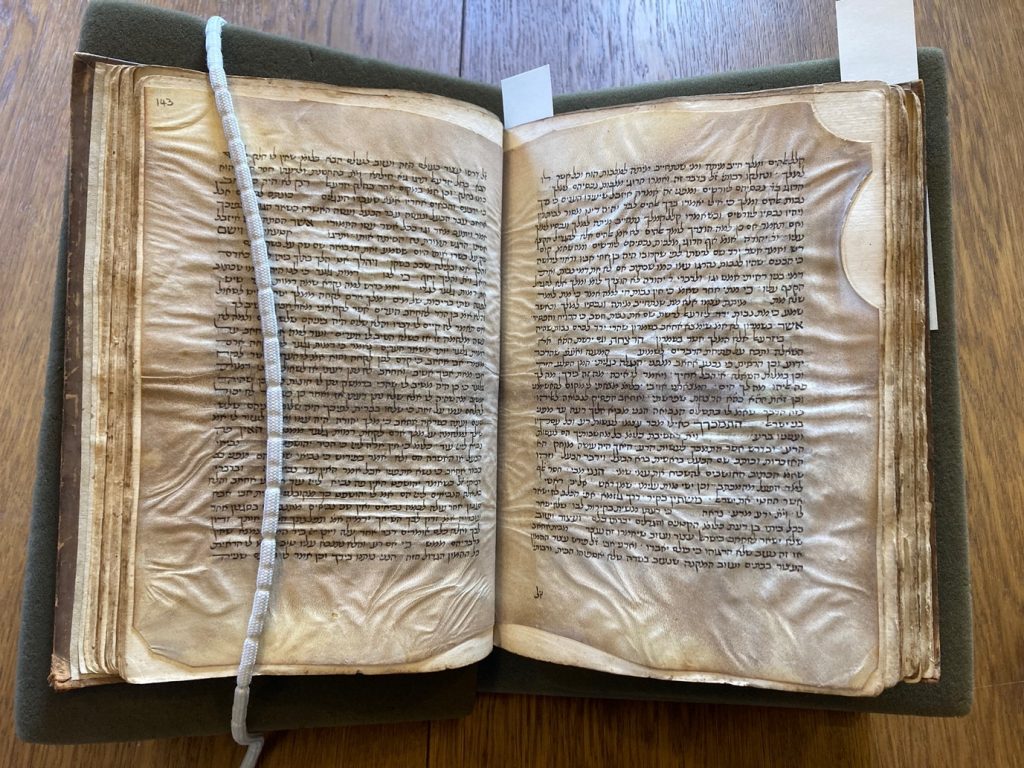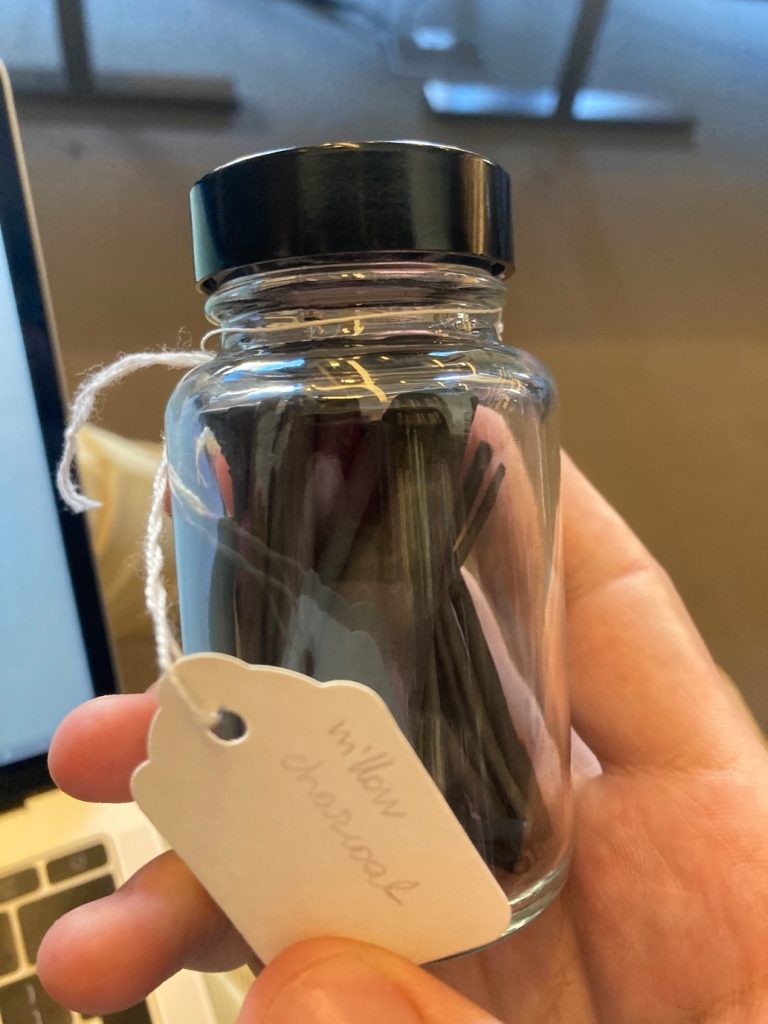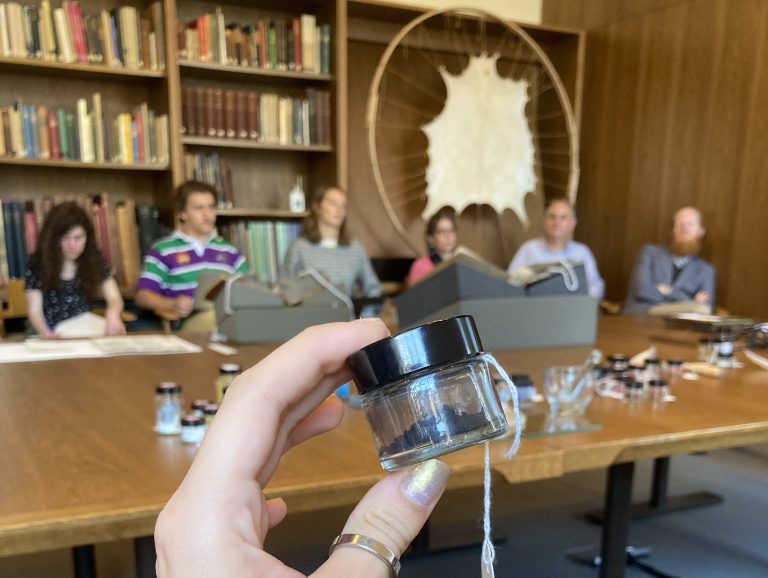By Thomas Godfrey
Understanding materiality can teach us a lot about a manuscript. Seeing as we will be looking at many manuscripts over the course of the year, we were granted the opportunity to get to grips with the fundamentals of how they are made. Through attending a workshop led by Andrew Honey, Robert Minte, and Celine Delattre (all of whom work within the conservation department), we gained insight into the production and uses of parchment, paper, inks, and pigments.
I would hazard a guess that all of the notes we were taking ended up either on paper or in a word processing software, as opposed to on parchment. As Andrew Honey made clear, when compared to the process required for paper production, parchment is neither a quick nor a cheap option. However, up until the 15th century, it was far more common in Europe than paper.
Made from the processed skins of sheep, goats or calves (usually no older than 3 months in the case of the latter), producing parchment is a rather laborious task. The pelt has to be soaked in a weak solution of lime in order to soften the skin, thereby allowing for the hair follicles to dissolve. Once this is done, the hair is scraped from the skin with a blunt, curved knife. After this process has been carried out, the skin is attached to a wooden frame, in order to add tension. Whilst on the frame, another knife is used to remove any unwanted tissue and, as the skin dries, it gets thinner. The more the skin has been worked, the better quality the parchment.

Paper, on the other hand, is made using cellulose fibres, which are partially fermented in the presence of water. A wooden frame called a “deckle” is dipped into the solution of water and fibres, allowing for the fibres to sit on the metal mould, as the water drains through. The fibres are then pressed in order to remove any excess liquid. Once this has been done, the paper is hung over horse hair lines to dry out.
Given that the paper we use today is immaculately clean and crisp, it was very interesting to see that the parchment and paper used for the various manuscripts shown to us were covered in various patterns, as well as being shaped irregularly. For example, we looked at the Commentary on the Hebrew Bible (MS. Hunt. 300), which displayed clear signs of the goat’s bodily features; we were able to discern where its spine had been from observing the darker patches on the sheet. Additionally, due to the goat having been so young, the parchment was too small to be trimmed to the shape of the rest of the pages and so its edges are not uniform. With regards to paper, the manufacturing process leads to patterns such as laid lines. This ribbed texture derives from the pattern of wires used in the sieve when draining the water. As well as laid lines, one can look out for watermarks identifying the paper maker – a design that is bent from wire and sewn onto the surface.
I was able to compare the tactile qualities of both materials and it was apparent that the difference in texture between parchment and paper is immense, with the latter being far thinner and generally less rough.
Following Andrew Honey’s illuminating introduction to materiality, Robert Minte and Celine Delattre gave us a fascinating crash course in inks and pigments. We were able to hold various substances that can be used to make inks and pigments; however, they were contained within jars due to some of them being toxic.

Both Robert Minte and Celine Delattre stressed, on more than one occasion, that is it almost impossible to identify pigments on a manuscript just by looking at them. With this in mind, the Bodleian works closely with Durham University to analyse various pigments. As a Durham graduate, I was very excited to hear about this collaboration! One of the manuscripts that we looked at contained Egyptian blue. We were told that this discovery, made by the team in Durham, was an incredible one given that only around 20 to 21 western manuscripts contain this particular pigment.
This workshop enabled us to consider some of the key aspects of a manuscript’s material significance and we are all very grateful to the conservation department for having offered their time in order to educate a new generation of bibliophiles.
